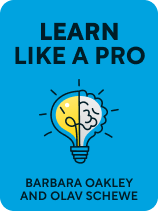

This article is an excerpt from the Shortform book guide to "Learn Like a Pro" by Barbara Oakley and Olav Schewe. Shortform has the world's best summaries and analyses of books you should be reading.
Like this article? Sign up for a free trial here.
What if you could read more efficiently? Would you like to be able to memorize the material you’re learning? What’s the best way to prepare for an exam?
Drawing on the latest research in cognitive psychology and education, Barbara Oakley and Olav Schewe provide proven techniques for mastering new skills and knowledge quickly and efficiently. They provide practical tips for excelling in academic settings so you can become a better learner for life.
Continue reading to discover how to do well in school and unlock your full learning potential.
How to Do Well in School
The authors offer tips and techniques for excelling at key elements of academic learning. Here’s their advice for how to do well in school, including tips for active recall, reading and comprehending, taking notes, memorizing, and doing well on exams.
How to Learn With Active Recall
The authors argue that the best way to learn is to actively engage with the material. By doing so, you’ll absorb far more information than when you engage with materials more passively. This is because active learning helps build longer and stronger neural connections.
To actively engage with your materials, they recommend a technique called active recall. To practice active recall, periodically look away from what you’re studying and try to remember what you just learned. It can also be helpful to explain the ideas in your own words or teach them as if you were explaining them to a grade-schooler. You can use this technique with any kind of material, such as text, videos, or lectures.
Active recall helps you internalize concepts. The authors say that you haven’t really learned if you can’t retrieve something from your memory, and that when you pull information from your memory, you help solidify it in your long-term memory. Active recall can also give you real-time feedback on how well you’re absorbing new information.
How to Read
Improving reading efficiency is not only about increasing speed. It’s about optimizing your comprehension—understanding what you read and remembering it later. Focusing solely on increasing your reading speed can easily harm your comprehension.
To increase your reading efficiency and comprehension, the authors recommend the following:
Preview the text before reading it in detail. Getting a big-picture view of the text, its organization, and the overall themes will prepare your mind for what is coming and make it easy to comprehend.
Read actively. To read actively, practice active recall by asking yourself to restate key concepts as you read. Highlighting can also help you read actively, but only when you review what you’ve highlighted the next day—your brain doesn’t build neural connections in your long-term memory unless you review your highlights after some time has passed.
Annotate. Another active reading strategy is annotation. As you read, write down comments and questions that come to mind. In your own words, note key concepts and their relationships, and then, in the end, write a small summary of what you read. Annotating as you go makes reviewing and referring back to the text easier. It also helps transfer the information into your long-term memory for quality learning.
How to Take Notes
To get the most out of note-taking, use engaging ways to take them, organize them, review them, and use them as study tools. The authors outline the following strategies to make the most out of your notes.
Take notes with the dual-column method. Divide your note page into two parts with a vertical line down the center. Capture the key concepts on the right side and summarize them on the left using short phrases. When reviewing your notes, cover up the right side and try to recall the meaning from the summary words. This method helps you understand the structure of ideas and retain the information better.
Use mind mapping to organize your notes. Mind maps are visual representations of topics. A typical mind map starts with a central idea or concept and branches into related ideas connected with lines, colors, and images.
Use active recall to review your notes. Review your notes the same day you write them and again the next day. Practice with them using active recall strategies like flashcards. The authors assert that the process of reviewing your notes is more important than the process of note-taking itself.
How to Memorize
To improve your memorization skills, practice active recall and space out your session over several days. Additionally, try memorization hacks such as acronyms and mnemonic devices. You can also envision unusual, vivid, and compelling images to represent concepts and information, such as with the memory palace technique. In this technique, you create a representative image for every idea you want to remember and then “place” those images in a particular space, like a building, in your imagination.
(In Moonwalking with Einstein, Joshua Foer explains that our brains are wired to remember images and places better than numbers and words, which is why image-based methods like the memory palace work. Foer recommends that you make the images in your memory palace compelling by giving them multisensory, vulgar, funny, or absurd qualities. Our brains also remember new information when we connect it to things we already know, which is why mnemonic devices and acronyms work.)
How to Do Well on Tests
No matter how well you know a subject, your test scores will likely suffer if you don’t know how to take a test effectively. The authors offer the following tips.
Before a test: Understand the test format, the types of questions that will be asked, and how the test will be evaluated. Discuss any unclear aspects of the test with your instructor, and talk to peers to gain insights they may have. Create a study plan with a schedule, necessary study materials, and the time you’ll devote to each topic. Having a plan can reduce stress and help you focus on studying.
During a test: Read the instructions carefully and, on timed tests, keep track of your progress. Try to answer all the questions, even if you’re unsure of the answer unless the test penalizes guessing. Use the challenge-first method: Start by scanning the questions, marking the hard ones, and working on them until you feel stuck. Then, move on to easier problems, and return to the challenging problems later. While working on the easier problems, your brain will work in diffuse mode to sort out the harder problems in the background. Be mindful of your time—don’t get fixated on difficult questions while neglecting easier ones that can also earn you points.

———End of Preview———
Like what you just read? Read the rest of the world's best book summary and analysis of Barbara Oakley and Olav Schewe's "Learn Like a Pro" at Shortform.
Here's what you'll find in our full Learn Like a Pro summary:
- Proven techniques for mastering new skills and knowledge quickly
- How to improve your memory, increase your focus, and manage your time
- Practical tips for how to excel in academic settings






